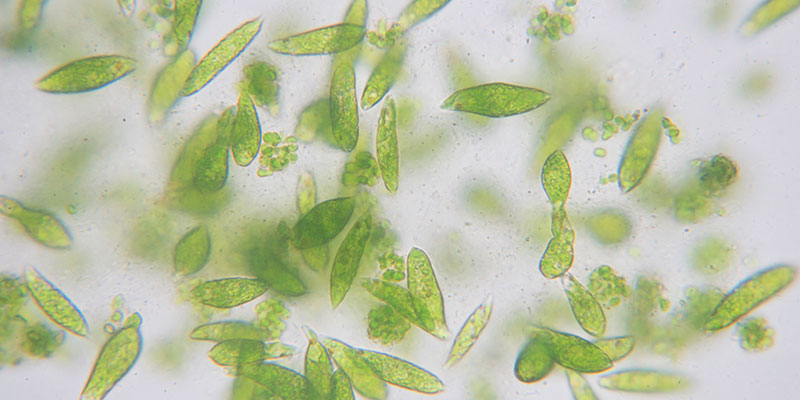
Understanding algal CO₂ fixation to guide improvements in plant yields
Context
Photosynthesis harnesses energy from sunlight to drive the fixation of CO2 into the organic carbon building blocks of life. Eukaryotic algae and cyanobacteria play fundamental roles in global biogeochemical cycles, yet there are still substantial gaps in our knowledge of how they acquire their CO2.
The research
The Mackinder Lab research focuses on how photosynthetic microbes efficiently transport CO2 from their surrounding environment and concentrate it in the proximity of Ribulose-1,5-bisphosphate carboxylase/oxygenase (Rubisco) - the principle carbon fixing enzyme. We use high-throughput, systems biology approaches to rapidly identify key components of this CO2 concentrating mechanism (CCM). These data are used to guide the engineering of a CCM in higher plants to improve photosynthetic performance.


Luke Mackinder
Professor Mackinder's research focuses on understanding the molecular basis of carbon fixation in algae and cyanobacteria.
